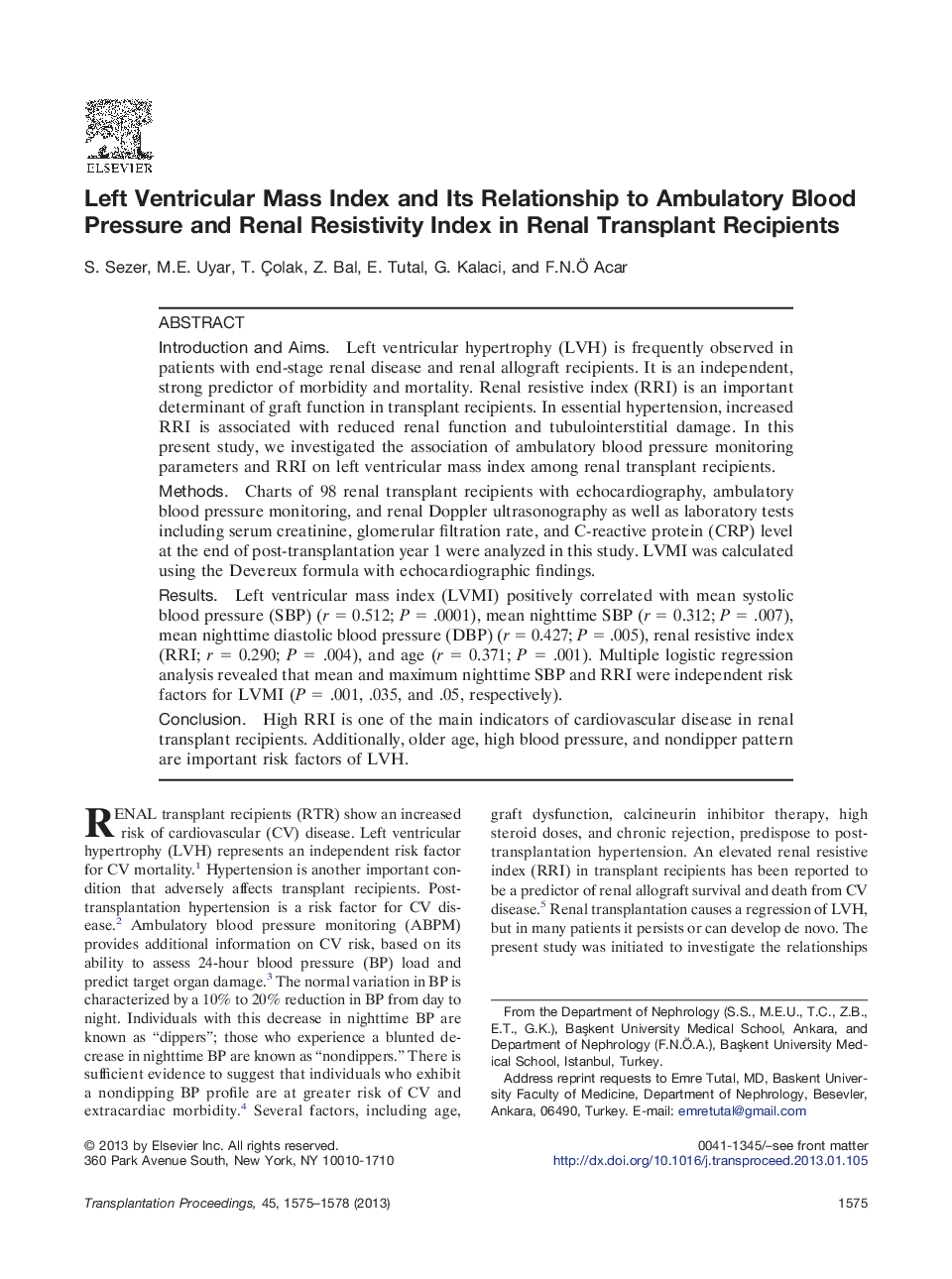| Article ID | Journal | Published Year | Pages | File Type |
|---|---|---|---|---|
| 4257323 | Transplantation Proceedings | 2013 | 4 Pages |
Introduction and AimsLeft ventricular hypertrophy (LVH) is frequently observed in patients with end-stage renal disease and renal allograft recipients. It is an independent, strong predictor of morbidity and mortality. Renal resistive index (RRI) is an important determinant of graft function in transplant recipients. In essential hypertension, increased RRI is associated with reduced renal function and tubulointerstitial damage. In this present study, we investigated the association of ambulatory blood pressure monitoring parameters and RRI on left ventricular mass index among renal transplant recipients.MethodsCharts of 98 renal transplant recipients with echocardiography, ambulatory blood pressure monitoring, and renal Doppler ultrasonography as well as laboratory tests including serum creatinine, glomerular filtration rate, and C-reactive protein (CRP) level at the end of post-transplantation year 1 were analyzed in this study. LVMI was calculated using the Devereux formula with echocardiographic findings.ResultsLeft ventricular mass index (LVMI) positively correlated with mean systolic blood pressure (SBP) (r = 0.512; P = .0001), mean nighttime SBP (r = 0.312; P = .007), mean nighttime diastolic blood pressure (DBP) (r = 0.427; P = .005), renal resistive index (RRI; r = 0.290; P = .004), and age (r = 0.371; P = .001). Multiple logistic regression analysis revealed that mean and maximum nighttime SBP and RRI were independent risk factors for LVMI (P = .001, .035, and .05, respectively).ConclusionHigh RRI is one of the main indicators of cardiovascular disease in renal transplant recipients. Additionally, older age, high blood pressure, and nondipper pattern are important risk factors of LVH.
